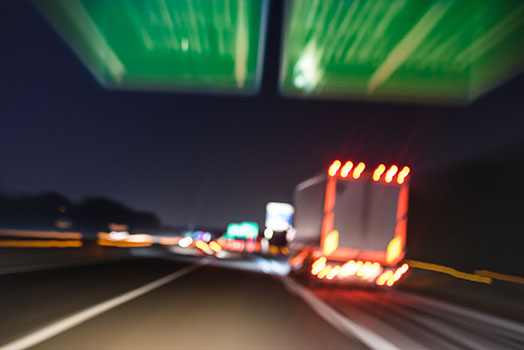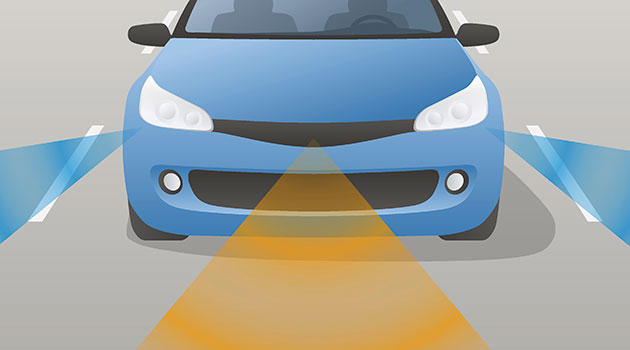The pursuit of autonomous cars has bulldozed through a number of societal norms on its path toward creating the future.
But for every industry left asunder by the quickly emerging technology, a brand new sector has formed.
The merging worlds of tech and automotive production have flourished with the myriad corporate mash-ups created to cater to a self-driving world. And the latest partnership formed around the idea is aimed at ensuring that world is as safe as possible.
Mothers Against Drunk Driving (MADD) has teamed up with California-based Velodyne LiDAR to promote the potential of autonomous technology to curb dangerous roadway incidents, and possibly even eliminate roadway fatalities altogether.
The outreach organization has long fought for initiatives meant to eradicate incidents of driving under the influence, and Velodyne creates the laser-guided technology integral to the self-piloted automobiles that could finally see MADD’s mission come to fruition.
While the realm of public advocacy may be an unusual one for a cutting-edge tech firm, and the future of automotive gadgetry not the first place one would expect to find a non-profit group, the two have found plenty of common ground around the goal of bringing the vehicles to the road as quickly as possible and are utilizing their respective strengths and expertise to promote the shared dream of increasing automotive safety—and reducing the number of deaths on the road.
By the Numbers
The biggest joint target established by the groups in their cooperative quest? Saving lives.
The concept has been at the heart of MADD’s mission from the start, just as the need for it has been a concern since the dawn of driving itself.
“Drunk driving dates all the way to the beginning of the automobile,” said JT Griffin, MADD's chief government officer. “You can go all the way back and it’s always been a problem.”
Unfortunately, the trend hasn’t gotten better with time.
Drunk driving incidents were responsible for 10,497 motor vehicle deaths in 2016.
Drunk driving incidents were responsible for 10,497 motor vehicle deaths in 2016—the last year for which data are available—constituting 28% of all roadway fatalities that year, far more than any other cause. And the figure was on the rise, marking a 1.7% increase from the previous year.
“Drunk driving is still the biggest killer on the roadways,” Griffin said. “There’s texting and driving, drug-impaired driving, all these other issues out there that people want to talk about, but the truth is drunk driving is still claiming more lives than all of them.”
To combat driving under the influence, Mothers Against Drunk Driving has deployed a number of different tactics, including promoting education about the issue and supporting a greater presence of law enforcement and DUI safety checkpoints on the road.
But the endorsement of the new-age tech may be the most direct route toward achieving their goal.
“When a lot of people think about self-driving cars, they think, ‘Oh, isn’t this great? I won’t have to drive to work, and I could spend an hour or two doing things I would rather do other than physically driving my car,’” Griffin said. “And that’s part of it. And a lot of people focus on that, but we want to make sure people are aware of the safety component of the technology, too.”
He continued, “If we can take the car and remove the drunk driver from the driver’s seat and make sure there’s a way for that person to get home safely, that’s really what we’re trying to do.”
The Ultimate Designated Driver
Relieving not just drunk drivers but any drivers from duty is also Velodyne’s ultimate objective.
The family-owned business began as an audio store but shifted gears in 2005 after founder David Hall became interested in autonomous cars through an inaugural self-driving race put on by the Pentagon to promote awareness of the idea.
A “serial inventor” is how Sally Frykman, communication and education manager at Velodyne, describes him. Hall’s focus turned to the creation of LiDAR, the laser technology that stands in for autonomous eyes by creating a 3D graph of the world for the cars to utilize when navigating their way around. (Incidentally, the same race that pulled Hall into the self-driving scene saw Silicon Valley wunderkind Anthony Levandowski get his start working on the laser technology, which would eventually lead to one of the tech world’s biggest lawsuits.)
“LiDAR can see beyond the scope of the cameras on the cars, beyond the human eye, and it’s collecting an unfathomable amount of data points,” Fryckman said. “It’s the foundation for autonomous technology and autonomy, period. These cars wouldn’t be driving at all without it.”
Still, the company’s ambitions extend past the pure pursuit of creation.
“Part of what’s so exciting about this technology is the ability to potentially reduce car accidents,” Fryckman said. “It was [Velodyne president Marta Hall’s] vision that this technology is going to create safety on the roadways. That’s something she’s been saying for years and something she feels very passionate about.”
It’s also something MADD fervently supports. The two organizations realized their shared aspiration this summer in Washington, D.C., when both sent representatives to testify before Congress as the legislative body debated a measure to create federal regulations on the development of autonomous cars. (Though the bill showed early promise of swift passage, it’s currently stalled in the Senate.)
Whether or not Washington officially gets on board, both groups remain committed to doing everything they can to promote the technology.
Looking Forward

Still, much about the idea remains up in the air. Driving while impaired may be a deep-seated issue in society, but the concept of autonomous cars is still very new—and LiDAR even moreso.
“A lot of people are trying to envision what the future will look like, and people don’t necessarily know,” Fryckman said. “That’s why we’re so actively involved with the [Department of Transportation] and regulators, so we can see what this could look like.”
To help illuminate that vision—and bring more people on board with the self-driving plan—education is key, both groups agreed, especially given the fact that 94% of accidents on the road are caused by human error.
Luckily, MADD has a history of creating a difference. Since the organization’s founding in 1980, it’s helped reduce drunk driving deaths by 50%, saving more than 370,000 lives. And with the help of Velodyne and the perfection of autonomous vehicles, the group foresees even more success moving forward.
“We already changed the culture on drunk driving—it’s not a joke anymore,” Griffin said. “Everybody knows that that you’re not supposed to drink and drive, the problem is people are still doing it, so in order to get to the next level, zero deaths per year, we’re looking to technology, and we think these things can really help us get there.” “Nobody knows for sure exactly what the future is going to look like, but with Level 4 and Level 5 automation, we know that it’s going to save lives, and it’s going to have an impact on drunk driving.”
